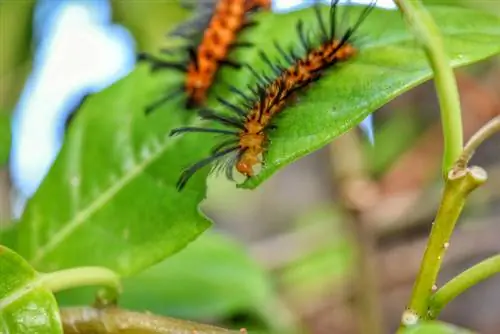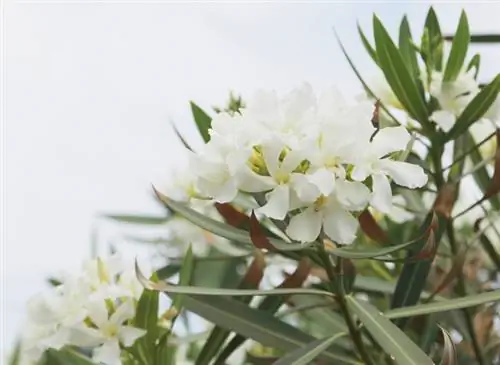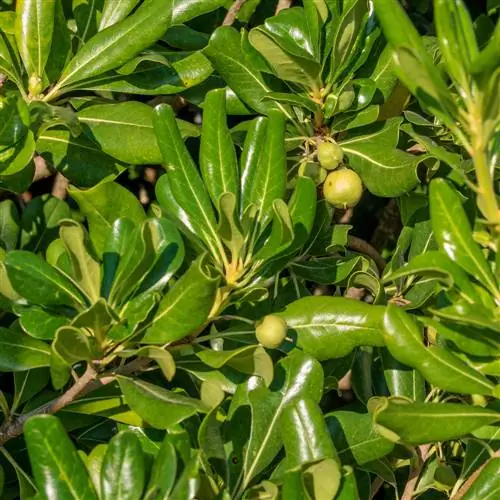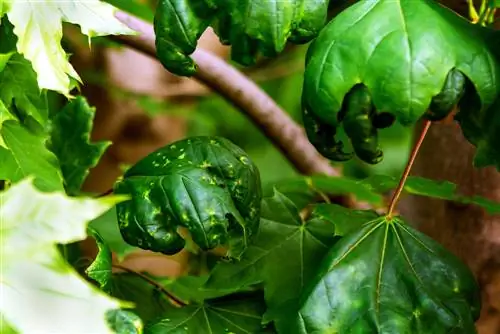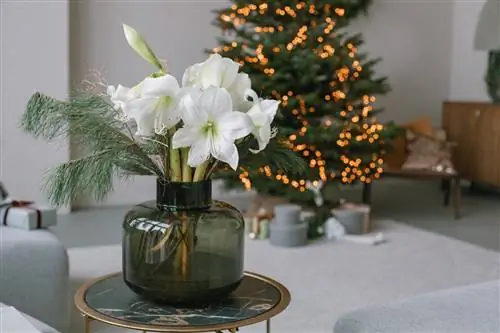- Author admin [email protected].
- Public 2023-12-16 16:46.
- Last modified 2025-01-23 11:20.
Usually the leaves of the oleander are lanceolate and lush green. As with other plants, oleander leaves are a good indicator of whether the bush is doing well or not: discoloration, but also curling, are typical signs that the plant is sick or something is not right for it.
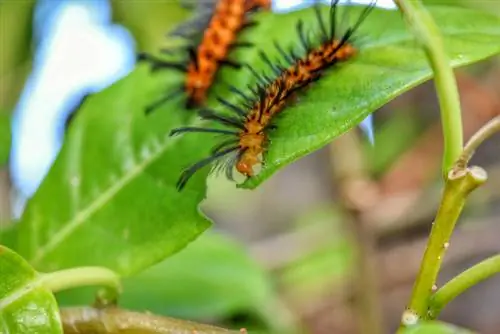
Why do oleander leaves curl up and what can you do about it?
If oleander leaves curl up, this can indicate pest infestation or inadequate site conditions such as cold and drafts. This can be remedied by a change of location, root protection, lukewarm watering or protection from harmful insects.
Check oleander for possible pests
First of all, the curling of the leaves can be an indication that the plant is trying to protect itself from a pest infestation. There are many pest insects that prefer to colonize oleanders and feel extremely comfortable there. Spider mites in particular have a particular preference for the Mediterranean shrub, which is why you should check it regularly for infestation. Spider mites (and other pests such as aphids) are leaf sap-sucking insects and prefer to sit on the underside of leaves. Their sucking activity can cause the oleander to curl its leaves.
When the leaves curl up, the oleander is often too cold
However, curling leaves are more often a sign that the oleander does not feel comfortable in its location - possibly due to drafts or because the Mediterranean plant is simply too cold. Is it quite sunny and warm during the day, but gets significantly cooler at night with temperatures below 18°C? Then the roots of the oleander freeze and are unable to supply sufficient moisture to the leaves - which in turn have a high evaporation rate in the sun and therefore suffer from a lack of water. In such a situation, you have the following options for action:
- You move the oleander to another location.
- You protect the roots by placing the planter on an insulating base made of Styrofoam (€7.00 on Amazon) or wood.
- Wrap the pot with protective foil overnight.
- You water the plant early in the morning with lukewarm water,
- how to bring the cold-sensitive roots up to operating level more quickly.
Alternatively, you can of course bring the oleander into the house overnight. In the case of cooling drafts, however, only a change of location helps. This should be sunny, warm and, above all, protected!
Tip
The only problem is that spider mites also love warm and protected locations - and particularly like to attack oleanders. So check for any infestation at least once a week and take countermeasures in good time.

